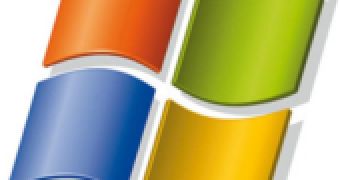Evolve or die is a mantra that can be easily applied to the world of technology. Products that fail to keep up with the overall evolution of the market will soon be discarded and replaced, as they will begin to feel like a fish out of water. The tone for the vast majority of offerings is of course given by Moore's law and the way that the number of transistors in every integrated circuit has a natural tendency to double every two years, still. But in the world in which a five-year-old computer can be considered obsolete by today’s standards, a decade-old operating system continues to be the norm. However, this is about to change, simply because Windows XP has stopped evolving.
Service Pack 3 was the last glimmer of hope for the operating system released in 2001, and there will be no other service pack for the aging operating system, not for the 32-bit and not for the 64-bit flavors. Microsoft will not breathe additional life into Windows Vista’s predecessor, although it is committed to supporting the OS until 2014. It’s safe to say that, although little hesitant to paint Windows XP obsolete, Microsoft won’t pull the plug on the platform, especially not anytime soon, as, today, over 65% of the world’s users are still relying on the OS.
But ignoring Microsoft’s commitment to supporting XP customers, it is a company product that has the biggest chance of killing the operating system. The exploding market share, illustrative of its strong sales, recommends Windows 7 as the candidate for a job that represented yet another failure for Vista from the point of view of many. Microsoft’s latest and fastest selling operating system in history can only grow by converting users away from older Windows platforms, and XP customers are most easily becoming converts. But, in the end, it won’t be Windows 7 to kill off XP, just as it won’t be Microsoft either.
XP’s death sentence can only be executed by the hardware and software ecosystem, by the lack of support and interoperability. And, as the ecosystem evolves, more and more products will overlook XP in order to focus on newer releases of Windows. As XP no longer grows to embrace new technologies and is already incapable of keeping up the pace with new solutions, users will have no choice but to recycle the platform.
Sometimes, the ecosystem works against its natural tendency to evolve
In such cases, backwards compatibility contributes to keeping old technologies alive. Case in point: the 4K Byte-Sector HDD-Data Format Standard. Come 2011, hard drives will suffer the biggest format evolution in the past 30 years. Hardware manufacturers have already committed to making an advanced 4,096-byte sector format the standard in new products versus the old 512-byte sector format that dates back to floppy disks. (via BBC)
Martin Hassner, Hitachi Global Storage Technologies, and Ed Grochowski, storage consultant, explain in the 4K Byte-Sector HDD-Data Format Standard whitepaper why the new standard is necessary:
“Areal densities (data densities) in HDD’s are increasing on a yearly basis, and this involves a continuous loss of SNR. Data integrity, or sector failure rate, must be maintained to meet user requirements, and this cannot be accomplished by adding more ECC (error correction bytes) at the current 512 byte format. This bottleneck has been recognized by all major HDD producers. Furthermore, areal density increases involve an increased sensitivity to defects which cannot be corrected at the current sector format.
“Current HDD products use approximately 9% of ECC overhead to correct a raw bit error rate from 10-5 to 10-11. Future HDD product specifications assume a linear density at which the raw bit error rate is 10-3. Such a raw bit error rate cannot be corrected at the current 512 byte sector format, independently of the number of ECC bytes. Anticipated defect sizes of approximately 100 bytes cannot be corrected at this sector format.
“Using the same amount of ECC overhead, 9%, at 4K sector format, a raw bit error rate of 10-2.4 can be corrected to the required 10-11 target, solving the bottleneck problem. In addition, a 4k sector format ECC allows the correction of defect sizes of up to 400 bytes.
“Disk defects and processing damage comprise a majority of HDD field failures, and as areal density increases the smaller bit sizes effectively increase defects density. Lower flying height within the drive also increases defect sensitivity.
“It is important to note that HDD industry trends include an increase in areal density as user requirements require. This results in the obvious capacity increase per drive as well as faster performance and reduced price per Gigabyte, all important to HDD users. It is expected that this trend will continue throughout this decade.”
The new 4K Byte-Sector HDDs deliver enhanced performance and efficiency, lower power consumption and boosted reliability, and more storage space (2 TB). Microsoft has already embraced the new format with the Windows 7 and Vista operating systems, however, it did not do the same with Windows XP. In this regard, it will be the manufacturers that will tailor the new hard drives to XP, by mimicking the usage of 512-byte sectors.
This means that users still relying on Windows XP could come across a variety of problems with new hard disks, from performance depreciation to downright incompatibility. But, then again, maybe it’s high time that an operating system released in 2001 no longer just worked with the latest technology.
Microsoft Windows 7 90-Day Eval VHD is available for download here.
Another Windows 7 RTM Enterprise 90-Day Evaluation is available for download here.

 14 DAY TRIAL //
14 DAY TRIAL //